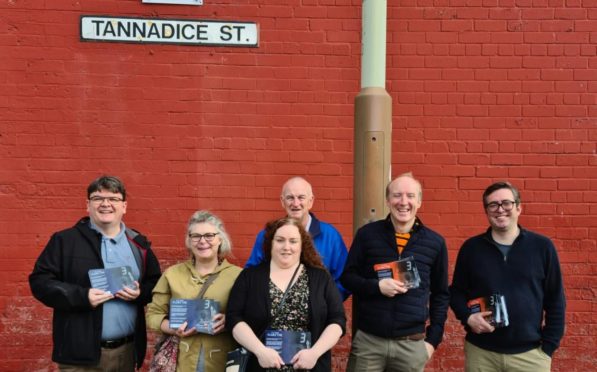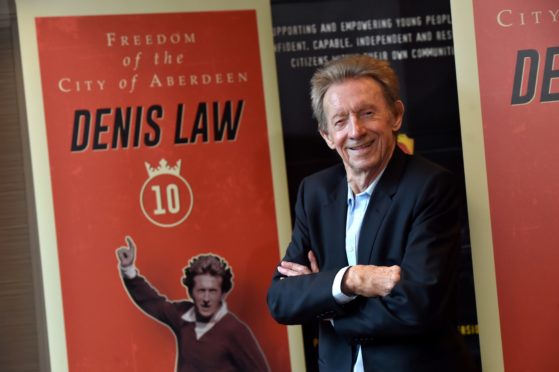A new campaign to have brain injuries resulting from playing football recognised as an industrial injury, has come to Dundee.
Injury Time campaigners were out in force at Tannadice Park ahead of the Dundee derby to help drum up support for the cause.
Research undertaken by the University of Glasgow concluded that footballers are up to five times more likely than others to suffer a brain injury.
University study
Players heading the ball, among other physical challenges associated with the game, have been confirmed as the main contributors to injuries.
Brain injury in football,which can lead to dementia, is now recognised as one of the key issues confronting the game.
A number of former professional players have been diagnosed with brain related diseases.
Football legend
Only last month, it was announced that Scotland legend, Denis Law was suffering from mixed dementia.
In November 2020, fellow Manchester United great, Sir Bobby Charlton disclosed that he had been diagnosed with the disease.
The 2020 study into dementia, commissioned by the Football Association and the Professional Footballers’ Association was led by the consultant neuropathologist Dr Willie Stewart of Glasgow University.
It analysed the medical records of 7,676 men who played professionally between 1900 and 1976.
Their data was then matched against more than 23,000 individuals from the general population.
Injury Time Campaign
Campaigners say the growing number of former footballers suffering from life altering brain injuries and diseases is the evidence that more urgent action needs to be taken.
The new campaign, backed by the GMB trade union, the Scottish Professional Footballers Association and Scottish Labour has three demands for the Scottish Government and footballing authorities
Firstly them to recognise and classify brain injury in football as an industrial injury.
Additionally, campaigners want funding for research into the practical and preventative support within the game.
Furthermore, they want to establish a working group to consider the issues around brain injury from the grass roots of the sport up.
The classification as an industrial injury will allow former players and their families to access a new range of benefits and support.
Industrial injury
Scottish Labour MSP for North East Scotland Michael Marra voiced his support for the campaign.
He said: “Every month now, we hear of more high-profile cases of former footballers being diagnosed.
“Behind those high profile cases will be dozens more unreported, where families are struggling on, doing their best for their loved ones and our heroes.
“The science is clear, these injuries are clearly a result of the time these men spent playing the game we all love.
“They have unknowingly sacrificed their health for our entertainment and its time that we support them properly now.
“The Scottish Government must recognise that these injuries are a form of industrial disease and allow these players to access the support they need, and deserve.”

